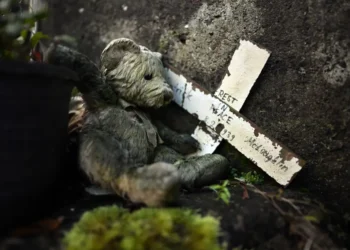Asakaa, a young mortician, has ignited a controversial conversation online with his unconventional beliefs about d3ath and the deceased. According to Asakaa, de@th is not as final as many assume; he insists that, under certain circumstances, deceased individuals can be resurrected.
His claims have captured the public’s attention, prompting a flurry of discussions on social media about the boundaries between life and de_th. Asakaa asserts that the key to this resurrection lies in obtaining the approval of the deceased’s family and performing the right ritu@ls, positioning himself as a modern-day spiritual intermediary between the living and the d3ad.
In an exclusive interview, Asakaa elaborated on his methodology and experiences in the mortuary field. He describes a unique approach to dealing with the bodies he prepares for burial, claiming to have successfully resurrected several individuals since he began his career.
His contentious assertions challenge widely accepted beliefs surrounding mortality, suggesting that with the proper intentions and practices, life can be restored. This has garnered both intrigue and skepticism from the public, leading to discussions about the ethical implications of his work.
Many are left pondering the authenticity of his experiences and whether they stem from genuine spiritual encounters or psychological phenomena.
Asakaa furthermore professes an ability to communicate with the deceased, suggesting he can inquire about the circumstances of their d3aths. This claim raises questions about the nature of his interactions and whether he believes in an afterlife where souls linger until they receive closure.
He describes moments while preparing bodies where he perceives “strange things” that defy rational explanation, asserting that these experiences reinforce his belief in the interconnectedness of the living and the d3ad. This aspect of his work appeals to a range of individuals fascinated by the supernatural, but it also invites skepticism from clinical professionals and traditionalists who view such claims as unscientific.
While Asakaa continues to attract attention for his radical views, the responses are polarized ; some view him as a visionary challenging the dogmas surrounding death, while others label him a charlatan exploiting the vulnerabilities of grieving families.
Regardless of the opinions surrounding him, Asakaa’s narrative opens the door for a broader conversation about beliefs related to d3ath, mourning, and the unexplained experiences that often accompany loss. His insistence on the possibility of resurrection and communication with the dea_d invites us all to reconsider our perspectives on life, de_th, and what lies beyond, sparking a much-needed dialogue in a society often hesitant to confront the mysteries of mortality.









